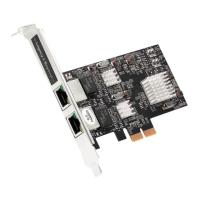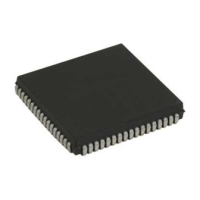Reference Thermal Solution
29 Thermal and Mechanical Design Guidelines
4.4 Environmental Reliability Requirements
The environmental reliability requirements for the reference thermal solution are
shown in
Table 5 and Table 6. These should be considered as general guidelines.
Validation test plans should be defined by the user based on anticipated use
conditions and resulting reliability requirements.
The ATX testing will be performed with the sample board mounted on a test fixture
and includes a processor heatsink with a mass of 550g. The test profiles are
unpackaged board level limits.
Table 5. ATX Reference Thermal Solution Environmental Reliability Requirements
(Board Level)
Test
1
Requirement Pass/Fail
Criteria
2
Mechanical
Shock
• 3 drops for + and - directions in each of 3
perpendicular axes (i.e., total 18 drops).
• Profile: 50 G, Trapezoidal waveform, 4.3 m/s
[170 in/s] minimum velocity change
Visual\Electrical
Check
Random
Vibration
• Duration: 10 min/axis, 3 axes
• Frequency Range: 0.01 g2/Hz @ 5Hz ramping to
0.02 g2/Hz @20 Hz, 0.02 g2/Hz @ 20 Hz to 500 Hz
• Power Spectral Density (PSD) Profile: 3.13 g RMS
Visual/Electrical
Check
Thermal
Cycling
• Non-Operating, -40 °C to +70 °C Thermal
Performance
Humidity • 85 % relative humidity / 55 °C Visual Check
NOTES:
1. The above tests should be performed on a sample size of at least 12 assemblies from 3
different lots of material.
2. Additional Pass/Fail Criteria may be added at the discretion of the user.
The current plan for BTX reference solution testing is to mount the sample board
mounted in a representative BTX chassis with a thermal module assembly having a
mass of 900g. The test profiles are unpackaged system level limits.

